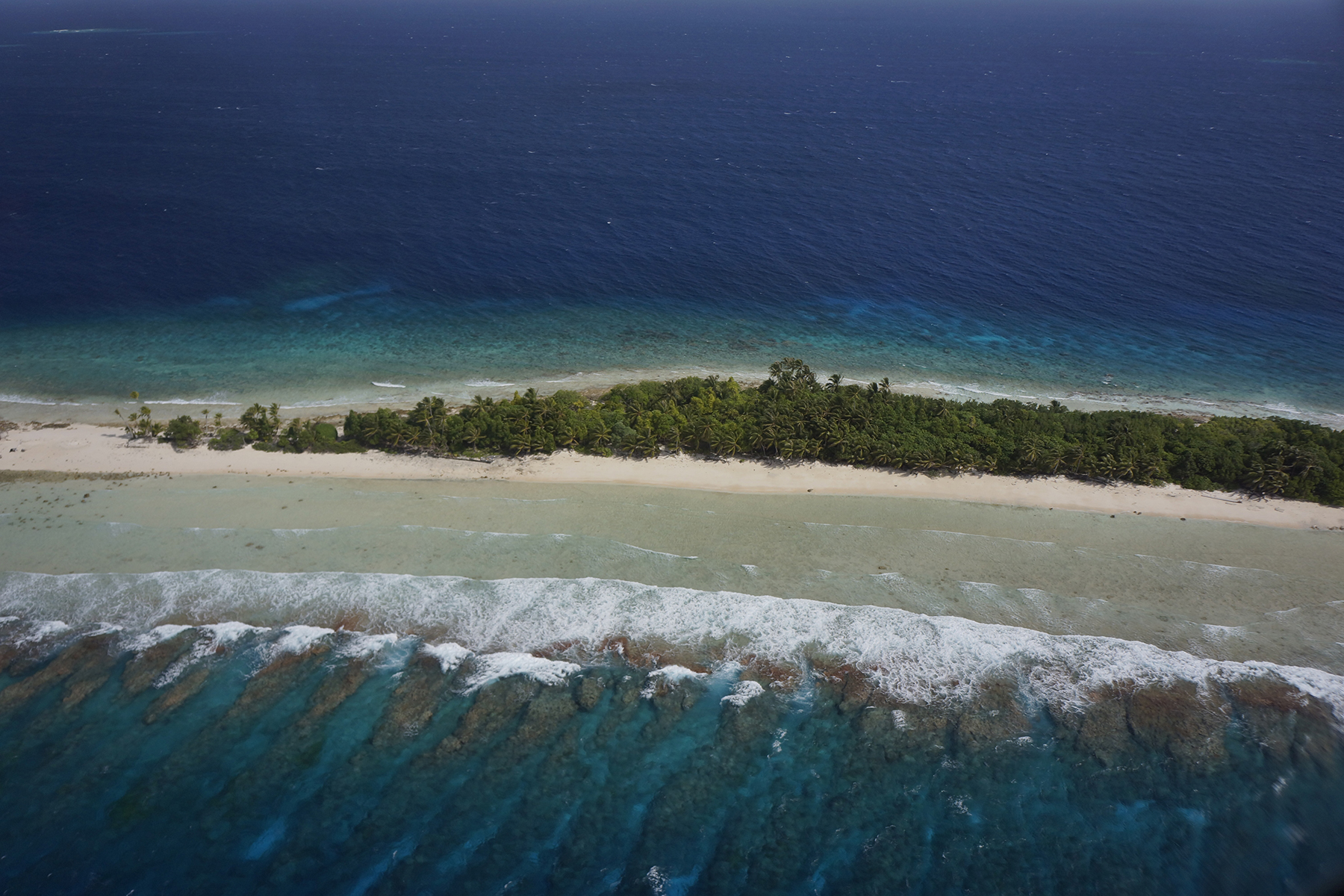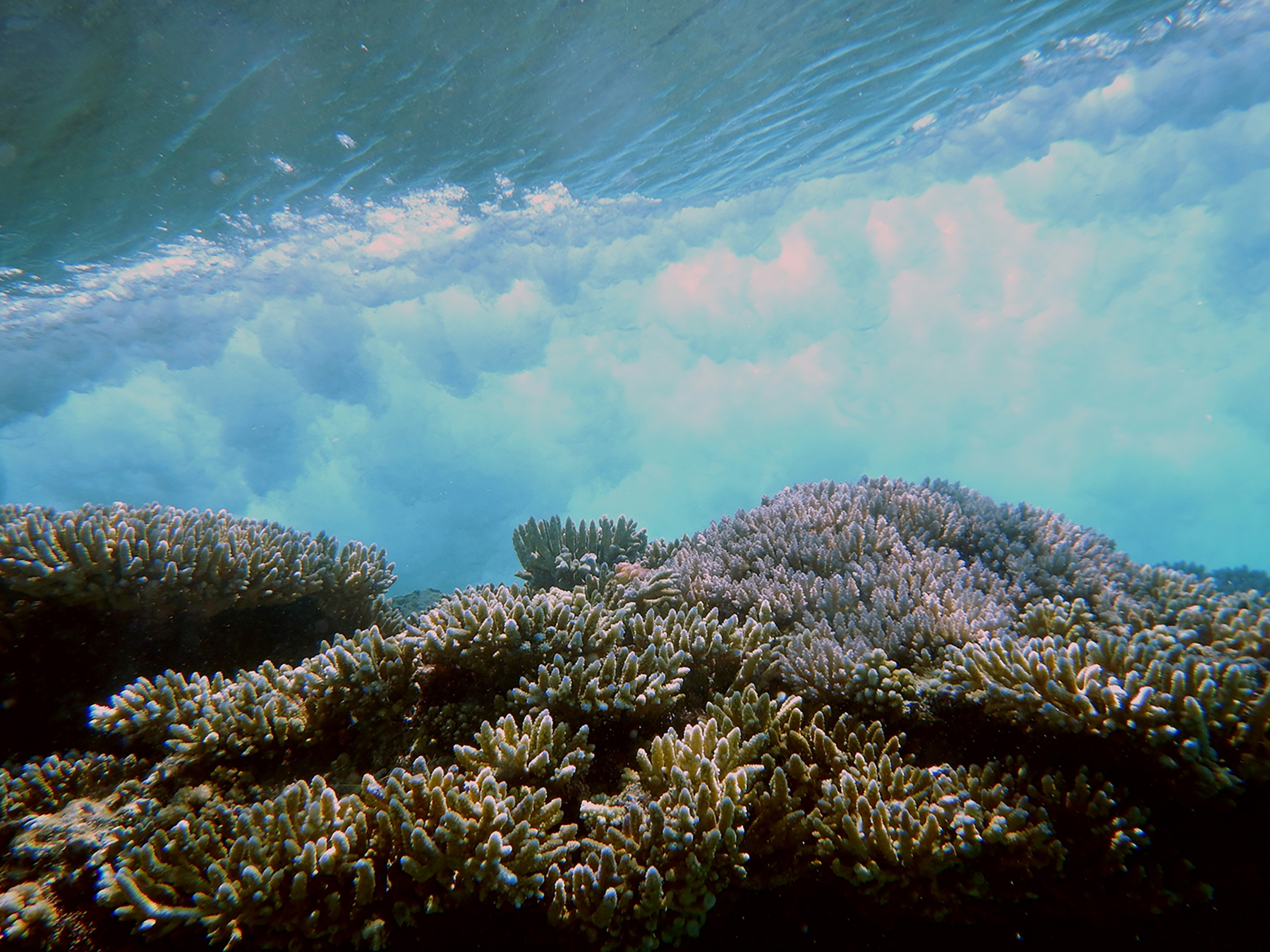By Jay Landers
Coral reefs have long been recognized as diverse, biologically complex ecosystems that provide habitat and food for myriad marine species. However, coral reefs increasingly are receiving recognition as infrastructure for the benefits they provide by protecting coastal areas and the communities on or near them.
Citing these benefits, a task force comprising multiple U.S. federal agencies, states, and territories recently passed a resolution declaring coral reefs to be “natural infrastructure.” Supporters of the resolution hope that it will lead to greater federal funding for coral reef restoration, including as part of efforts pertaining to hazard mitigation and disaster recovery.

Benefits of coral reefs
The principal way that coral reefs protect coastlines is by breaking waves and dissipating their energy, helping reduce coastal flooding and erosion, says Michael Beck, Ph.D., the director of the Center for Coastal Climate Resilience and the AXA Chair in Coastal Resilience at the University of California Santa Cruz.
“Coral reefs are a low-crested submerged breakwater,” Beck says. “On average, reefs can reduce 97% of the wave energy that would otherwise hit coastlines.”
When it comes to coastal protection, the second-most important feature of reefs, according to Beck, involves dampening the flow of water over them by means of friction. This action likewise helps decrease wave energy and reduce coastal flooding and erosion.
Traditionally, coral reefs have been valued mainly for the tourism and recreation they provide. But their value as infrastructure is gaining greater awareness. For example, a 2019 study published by the U.S. Geological Survey found that U.S. coral reefs provide an annual value of flood-risk reduction that exceeds $1.8 billion (in 2010 dollars). (Beck was a co-author of the report along with researchers from the USGS, UCSC, and the Dutch research institute Deltares.)

Much like other forms of nature-based infrastructure such as wetlands and oyster reefs, coral reefs historically have received relatively scant attention from federal agencies that fund hazard mitigation and disaster recovery efforts, Beck says, reflecting traditional views that “if it wasn't human-made, then it's not infrastructure.” As a result, federal funding rarely is provided to restore coral reefs that have suffered storm damage.
This view is shortsighted, Beck says. “We ought to be recovering those reefs for the (flood-reduction) benefits that we lost in those storm events,” he says. “We ought to bring them back in just the same way that we would focus resources on artificial protections.”
Resolution for reefs
This argument to restore damaged coral reefs is embodied in the U.S. Coral Reef Task Force’s Resolution 47.2, titled Coral Reefs as National Natural Infrastructure and approved on Oct. 26.
Established in 1998 to preserve and protect coral reef ecosystems, the U.S. Coral Reef Task Force is co-chaired by the U.S. Department of the Interior and the National Oceanic and Atmospheric Administration within the U.S. Department of Commerce. Additional members at the federal level include the Federal Emergency Management Agency within the U.S. Department of Homeland Security, the U.S. Department of Defense, and the U.S. Environmental Protection Agency.
Beyond its federal members, the U.S. Coral Reef Task Force includes the U.S. states, commonwealths, and territories that have coral reefs: Florida, Hawaii, the Northern Mariana Islands, Puerto Rico, Guam, American Samoa, and the U.S. Virgin Islands. (The Federated States of Micronesia, the Republic of Marshall Islands, and the Republic of Palau are nonvoting members of the task force.)
“The value of the coastal protection services provided by reefs can be retained or enhanced through active coral restoration, a nature-based solution that seeks to meet conservation and hazard mitigation management goals,” the resolution says.
Citing the “significant and diverse values of and threats to coral reefs,” the resolution calls for federal agencies to increase their “recognition of coral reefs’ role as national natural infrastructure.” Recognizing coral reefs in this way “will facilitate future federal funding of coral reef restoration by supporting the identification of coral reef restoration as an eligible project type across federal grant programs.”
FEMA funding
The resolution highlights FEMA’s Hazard Mitigation Assistance and Public Assistance grant programs. The former funds mitigation measures that reduce disaster losses, while the latter funds efforts to respond to and recover from major disasters or emergencies.
“However, the novelty of funding coral reef restoration under FEMA’s grant programs presents challenges to applicants seeking funding for these types of projects,” according to the resolution. “A federal recognition of coral reefs as national natural infrastructure would strengthen applications for coral reef restoration under FEMA grant programs, for example, particularly under (Public Assistance) where funding can only be allocated to repair or protect disaster-damaged public infrastructure.”
Despite the challenges associated with obtaining FEMA grant funding for coral restoration efforts, at least one entity has managed to do so.
In June, FEMA awarded $3 million in hazard mitigation grant funding to Puerto Rico’s Department of Natural and Environmental Resources for the first phase of the restoration of a coral reef barrier in the San Juan Bay. The funding represents the first time that FEMA has awarded hazard mitigation grant funds to restore a natural resource following a disaster. The project is eligible for another $35.6 million in funding pending approval of its second phase, says Karixia Ortiz Serrano, a lead public affairs specialist for FEMA.
Seeking to reduce flooding and erosion along San Juan’s coastline, the project “will create a system of hybrid coral reefs, including artificial coral and native living coral,” according to FEMA’s June 12 news release announcing the grant award. The project “will install a mix of cement structures similar to artificial coral and native living coral at 0.8 kilometers off the coast of San Juan,” the release states. “Similarly, in another section, a new artificial reef with three segments will be built.” This new reef “will reduce the number of drownings attributed to rough surf and dangerous currents in the Condado Beach area,” according to the release.
Declaring for coral reefs
The U.S. Coral Reef Task Force’s resolution recommends that its federal members “review and use their authorities and policies in a manner consistent with this declaration and empower them to use federal funds for the protection, maintenance, and enhancement of coral reefs,” the resolution states. At the same time, the resolution also calls on the “coral jurisdictions, which have not yet made declarations, to declare their coral reefs as natural infrastructure essential for protecting their coasts.”
On Oct. 17, U.S. Virgin Islands Gov. Albert Bryan Jr. did just that, signing an executive order that declares “ecosystems such as coral reefs, mangroves, beaches, seagrasses, (and) salt ponds” as natural infrastructure. The order directs the territory’s government agencies to seek increased federal funding to protect, conserve, and enhance natural infrastructure.
In spring 2023, the Hawaii Legislature adopted Senate Concurrent Resolution 41, designating the state’s coral reefs as critical natural infrastructure. The legislature “strongly supports nature-based solutions such as coral reef restoration for risk reduction,” according to that resolution.
For its part, Puerto Rico legally declared coral reefs as an “essential structure for the protection of the coasts of Puerto Rico and its inherent relationship in the conservation of beaches and other elements of nature,” according to its Law No. 72, which was passed in 2020.
This article is published by Civil Engineering Online.



